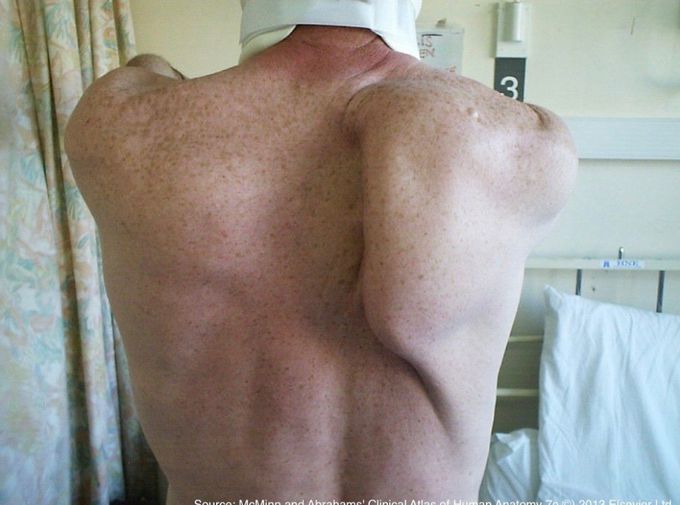


Winged Scapula
Winged scapula, a scapula that sticks out from the posterior chest like an angel’s wing, is commonly caused by weakness or paralysis of the serratus anterior muscle. The condition is most noticeable when the hand is pushed against a wall, or used to open a door as seen in protraction against resistance. Due to its superficial course, the long thoracic nerve may be damaged from a superficial cut as seen in a knife fight or car accident, damaged when removing the lymph nodes in breast surgery, or post operatively affected by local intensive radiotherapy. A muscular dystrophy such as Fascio Scapulo Humeral (FSH) may also affect scapular stability, though likely larger areas including muscles of the face would also be affected. The most accepted method of treatment is rehabilitation exercises. Strengthening of the muscles around the shoulder blade can help re-engage them, which can stabilise the shoulder blade and stop protrusion. Recovering from winged scapula can take months depending on the initial cause, severity of the condition, and chosen treatment. The information on this page is designed for general knowledge and informational purposes only and is in no way intended to generally or specifically treat, diagnose, prevent or cure any condition. The information on this page is not intended to be a substitute for informed medical advice or care. You should not use this information to diagnose or treat any health problems or illnesses without consulting your doctor or primary care provider.

